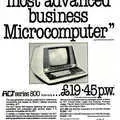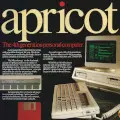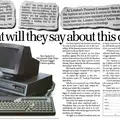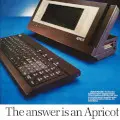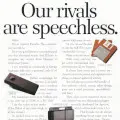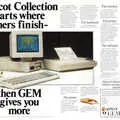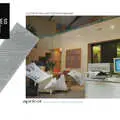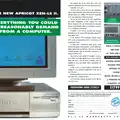
ACT/Apricot Advert - October 1983
From Personal Computer World
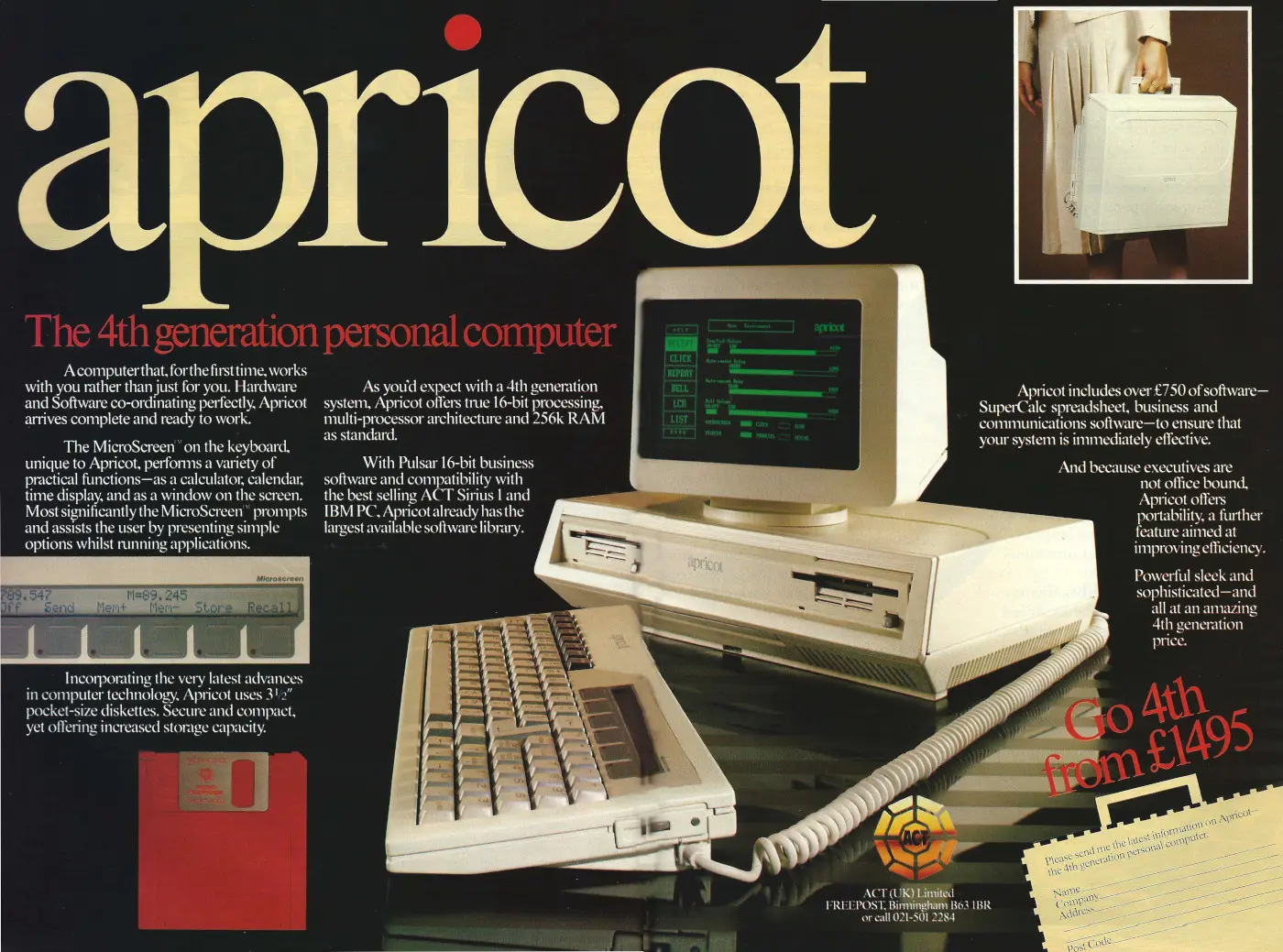
Apricot - the 4th generation personal computer
ACT - Applied Computer Techniques - of Dudley, near Birmingham, had been set up in 1965 as a time-sharing bureau.
In then diversified into reselling office equipment and producing software via its PETACT subsidiary[1], before branching out in 1980 by selling its first microcomputer - the ACT Series 800, a machine which was actually built by Computhink of California, where it was known as the Minimax.
In 1982 it signed a deal with Chuck Peddle - co-designer of the 6502 processor, the KIM-1 and the Commodore PET - to sell his new company's Victor 9000, calling it the ACT Sirius 1 in the UK and Europe.
For a while, this was the top-selling business micro in Europe, and even outsold the IBM, until Big Blue could be arsed to start shipping its 5150 over this side of the pond.
The IBM PC, despite being launched in the US in 1981, didn't officially make it to the UK until the beginning of 1983[2], giving ACT a useful head start.
Announced in the spring of 1983 as "Project Apricot"[3], ACT's first self-designed-and-built micro was unveiled to the public at the 6th PCW Show, alongside a cake "modelled to look just like ACT's new piece of leading-edge technology" which included a separate screen and keyboard, also in the form of cake[4].
The show ran from 29th September to 2nd October 1983 and was staged at London's Barbican Centre, where the Apricot - a roughly-fitted "pretend-onym" derived from the company's full name, APplIed COmputer Techniques - was billed by Personal Computer World as "the tastiest silicon cocktail for some time"[5].
Incorporating either one or two Sony 3.5" 315K floppies, high-resolution 800x400-pixel graphics and a true 16-bit 8086 processor running at 5MHz, the 23lbs (10.4kg) Apricot was billed as a "transportable", rather than the more optimistic "portable" which even-heavier machines like the Osborne 1 claimed.
It had been co-designed with external agency QED and was probably the first (and one of only a few) machines launched with ACT Sirius 1/Victor 9000 compatibility as a headline feature, rather than the increasingly-dominant IBM PC format.
As the company moved in to manufacturing its own machine, it set up a factory in Scotland which was capable of building one Apricot computer every minute.
ACT also approached Tandy, which in 1983 was the market leader in the US, with a view to jointly producing an "Apple beater".
These talks came to nothing, so the company made use of its Victor connections as an alternative way into the US - which was perhaps a brave move given the IBM's dominance over the pond - in a deal which enabled Victor to also build the Apricot in the US (and vice-versa) if necessary.
ACT's foray into the US market was ultimately unsuccessful, largely because of its Sirius compatibility. As managing director of ACT, Peter Horn, said:
"The US market had gone [IBM] compatible by then, so we didn't sell that many products".
ACT didn't seem to learn anything from this failure, and did the same thing when it became one of the first companies to launch an Intel 80286-based machine. Horn continued:
"By then we knew it was too late. They should not have been Sirius compatible, they should have been IBM compatible, so we were a year late[6]".
Meanwhile, the Apricot's keyboard was connected to the main machine with a full serial link, rather than the usual PS/2-style keyboard connection.
This was because the keyboard contained an unusual feature called "Microscreen" - a two-line, 40-character LCD, which at start-up showed the date and time but which could also switch in to being a calculator, without having to run any software.
It could show dynamic labels for the fully-programmable touch-sensitive function keys next to it - much like the soft keys of a modern smartphone keyboard, or like Apple's Touch Bar, which Apple "invented" some 35 years later.
The machine also came with a £750-worth of bundled software (£3,310 in 2025), including no fewer than three operating systems: MS-DOS 2, CP/M-86 and Concurrent CP/M-86.
Reviewed in October 1983's Personal Computer World, the Apricot came out very well, with Peter Rodwell summing up that it was a machine which:
"precisely and expertly designed for the modern micro market; it incorporates no barely-tried leading-edge technology, just careful, clever and well-proven software and hardware techniques and a good deal of original thinking. And it provides these at a price which is going to cause a few people something of a shock"[7].
It retailed for £1,495 + VAT, or about £7,600 in 2025.
Date created: 01 December 2014
Last updated: 03 December 2025
Hint: use left and right cursor keys to navigate between adverts.
Sources
Text and otherwise-uncredited photos © nosher.net 2025. Dollar/GBP conversions, where used, assume $1.50 to £1. "Now" prices are calculated dynamically using average RPI per year.
